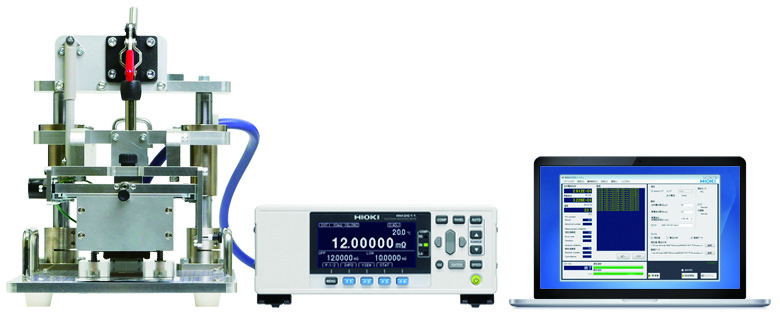Electrode sheet development without having to build a cell prototype. Consistently high production quality. These are just two of the advantages Hioki offers with the RM2610 Electrode Resistance Measurement System. This could lead to entirely new processes in the development and quality inspection of lithium-ion batteries.
“The RM2610 Electrode Resistance Measurement System marks a milestone in the research for even better lithium-ion batteries,” says Furuhata Yoshinori, Managing Director of Hioki Europe, describing the significant importance of the testing system for the battery market.
What makes the mew lithium-ion batteries special?
The key to advancing high-performance lithium-ion batteries is achieving the smallest, consistent resistance values of the electrode material from which the battery is made. It’s always about the same questions: Which slurry, calendering temperature and pressure achieve the smallest possible transfer resistance?

Instead of...
…having to build and test a battery prototype for each of the infinite variants, developers can rely on a measuring device that makes development much easier and more efficient.
In just one step...
…the RM2610 by Hioki precisely determines the resistance of the composite material and simultaneously calculates the contact resistance between the composite layer and the collector foil. Instead of a conventional four-wire measurement, the RM2610 uses a special high-tech probe. In an area of just 1 mm2, there are 46 spring-loaded contacts. During the measurement, a series of DC resistance measurements take place between these microscopic contacts. An algorithm quickly calculates the specific resistance of the active material and the contact resistance from these values and known parameters. This allows developers to approach the best possible result as quickly as possible.
This novel measurement method...
…was specifically developed by Hioki for laboratories in the battery industry to accelerate the development process of lithium-ion cells. However, the RM2610 is now also used for quality assurance in the production lines of cell manufacturers.
With its high measurement speed...
…the system can speed up development times but also ensures consistently high electrical resistances in the electrodes. This is an indispensable prerequisite for consistently high Lithium-ion cell quality. Because the lithium-ion battery is only as good as the weakest cell.
Technical Data:
- Contact testing + potential measurement: approx. 30 s
- Calculation: 35 s
- Measurement current: 1µA – 10 mA
- Number of probes per mm2: 46
If you are interested in this topic, you should read the article “The key to efficient high-voltage batteries“.

